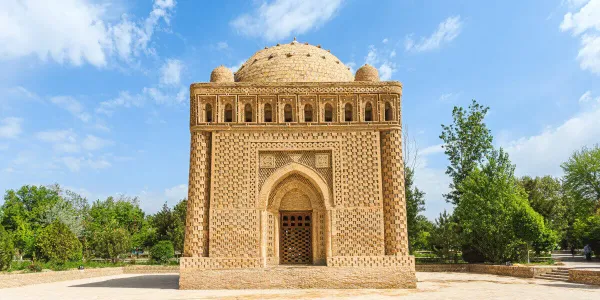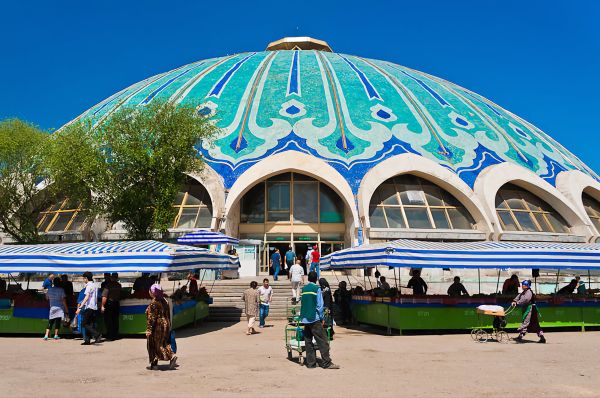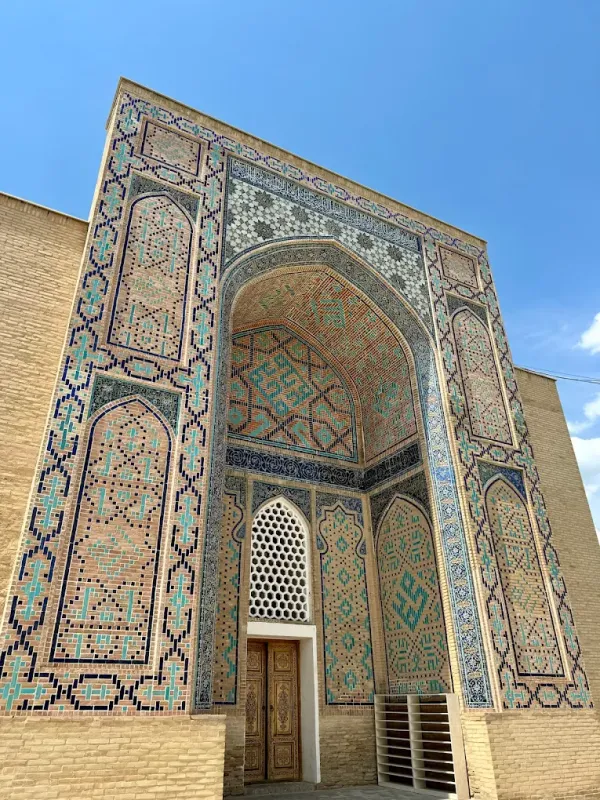Kattakurgan Gate
The Kattakurgan Gate is a historical symbol of the city of the same name, recalling its ancient origins and military might. The very name of the city "Kattakurgan" (translated from Uzbek as "big fortress") is directly related to these fortifications.
The city emerged as a fortified point at the intersection of trade routes, and the gate served as the main entrance to the citadel, which once protected residents from nomadic raids and controlled traffic along the Zeravshan River valley. The first fortifications appeared in the XVI–XVII centuries during the time of the Bukhara Khanate, and in the XVIII century they were rebuilt from brick and baked stone.
Architecturally, the gate is a massive arched structure made in a traditional oriental style.:
The two towers on the sides of the arch symbolize the watchtowers of the old fortress.
The dome completion above the arch is decorated with ornamental masonry.
The brick is laid in a characteristic "girih" pattern, which creates a geometric rhythm of the facade.
Previously, there was a bazaar and a caravanserai outside the gate, through which merchants from Samarkand, Bukhara and Kashkadarya passed. The place was not only defensive, but also a trade and cultural center where different peoples and traditions converged.
After the destruction experienced in the XIX–XX centuries, the gate was recreated and partially restored. Today they have become one of the business cards of Kattakurgan, a point of attraction for tourists, photographers and historians.
In the evening, the gates are illuminated, creating the effect of a solemn entrance to the old town. Nearby there is a small park and an observation deck with a view of the old part of the city.






